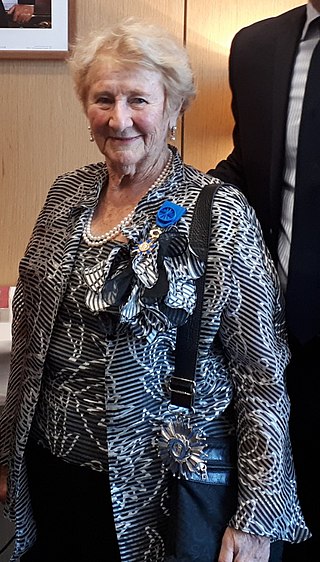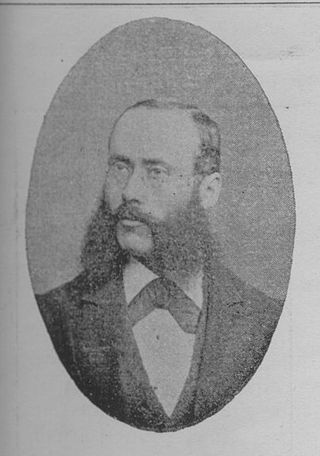
The Acadians are an ethnic group descended from the French who settled in the New France colony of Acadia during the 17th and 18th centuries.

Acadia was a colony of New France in northeastern North America which included parts of what are now the Maritime provinces, the Gaspé Peninsula and Maine to the Kennebec River.

Antonine Maillet, is an Acadian novelist, playwright, and scholar. She was born in Bouctouche, New Brunswick, Canada.

The Université de Moncton is a Canadian francophone university in New Brunswick. It includes campuses in Edmundston, Moncton, and Shippagan.
Beaubassin was an important Acadian village and trading centre on the Isthmus of Chignecto in what is now Nova Scotia, Canada. The area was a significant place in the geopolitical struggle between the British and French empires. It was established in the 1670s on an upland close to an extensive area of saltwater marsh. Settlers reclaimed the land to engage in cattle ranching and trade.

The Acadian World Congress, or Le Congrès Mondial Acadien, is a festival of Acadian and Cajun culture and history, held every five years. It is also informally known as the Acadian Reunion. Its creator was André Boudreau (1945-2005).

Caisse populaire acadienne ltée, operating as UNI Financial Cooperation, is a Francophone credit union based in New Brunswick, Canada whose members are primarily Acadians. UNI's administrative headquarters are in Caraquet on the Acadian Peninsula.

Phil Comeau is a Canadian film and television director, born in Saulnierville, Nova Scotia. He lives in Moncton, New Brunswick and Montreal, Quebec.

Tintamarre is an Acadian tradition of marching through one's community making noise with improvised instruments and other noisemakers, usually in celebration of National Acadian Day. The term originates from the Acadian French word meaning "clangour" or "din". The practice is intended to demonstrate the vitality and solidarity of Acadian society, and to remind others of the presence of Acadians. It originated in the mid-twentieth century, likely inspired by an ancient French folk custom.

Acadian cuisine comprises the traditional dishes of the Acadian people. It is primarily seen in the present-day cultural region of Acadia. Acadian cuisine has been influenced by the Deportation of the Acadians, proximity to the ocean, the Canadian winter, bad soil fertility, the cuisine of Quebec, American cuisine, and English cuisine, among other factors.

The Acadian Federation of Nova Scotia was created in 1968 with a mission to "promote the growth and global development of the Acadian and Francophone community of Nova Scotia."
Anselme Chiasson was a Catholic priest, educator and writer in New Brunswick. Chiasson made significant contributions to the recording of Acadian history and folklore.
Françoise Enguehard a French-speaking author from Saint-Pierre-et-Miquelon who now resides in Canada. She served as president of the National Society of Acadia from 2006 to 2012 and is the current president of the National Acadian Foundation. She and her husband have been involved in promoting the history and education about Acadian people, through the development of schools. She speaks throughout the French-speaking countries to promote French culture. She received the rank of Knight in the Order of La Pléiade in 2011 and was honored as a knight in the Legion of Honour, France's highest award, in 2015 for her commitment to preserving the heritage of Acadians and Saint-Pierre-et-Miquelon.
Corinne Gallant was a Canadian professor emeritus and feminist. She held the office of Vice-Dean of the Faculty of Arts and director of the philosophy program at the Université de Moncton. As a feminist leader, she co-chaired a working committee that led to the creation of the New Brunswick Advisory Council on the Status of Women and chaired the Canadian Research Institute for the Advancement of Women. She was made a member of the Order of Canada in 1988 and received the Order of Moncton in 2012.
Louis Haché was a Canadian writer considered to be one of the great Acadian novelists.
Muriel Kent Roy was a Canadian demographer.

Léone Boudreau-Nelson, C.M, was an American-born Canadian phonetician. She founded the Société d'art oratoire at the Université de Moncton, where she was professeur émérite.

Paul Carmel Laporte was a Canadian physician, businessman and artist. After studying medicine in Montreal, which he financed by working as an apprentice sculptor, Laporte became a physician in New Brunswick. In addition to founding a hospital, two museums, the first French-language radio station in Atlantic Canada, a construction company, and many other projects, he taught art as a volunteer for forty years. He is considered a pioneer of the visual arts in Madawaska, on the US–Canadian border, and many of his students have had a major impact on Acadian culture.

Sainte-Anne-du-Bocage, or simply Le Bocage, is a Catholic sanctuary in Caraquet, New Brunswick (Canada).

Israël-J.-D. Landry was a Canadian writer, teacher, musician, and publisher. He is known for founding the first French-language Acadian newspaper Le Moniteur acadien. In 1955 he was declared a Person of National Historic Significance as part of the Acadian Men of Letters.



















